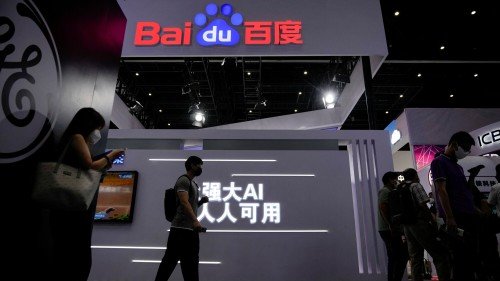
China has emerged as a major player in the global information technology (IT) industry in recent years. The country's rise as an IT hub has been driven by a number of factors, including its large and skilled workforce, government support for technology development, and a rapidly growing domestic market. In this blog post, we will explore the current state of the IT industry in China and the factors contributing to its success.
Market Size and Growth
China's IT market is the largest in the world, with an estimated value of $463 billion in 2021. The market has been growing rapidly in recent years, with an average annual growth rate of around 15%. This growth has been driven by a number of factors, including increased government investment in technology development, rising consumer demand for IT products and services, and a growing number of startups.
One key area of growth in the Chinese IT industry is in e-commerce. The country's large and growing middle class has led to a surge in online shopping, with e-commerce sales expected to reach $2.8 trillion in 2021. This has created opportunities for companies such as Alibaba and JD.com, which dominate the Chinese e-commerce market.
Another area of growth is in the development of artificial intelligence (AI) and big data. China has invested heavily in these areas in recent years, with the government setting a goal of becoming a global leader in AI by 2030. This has led to the emergence of companies such as Baidu, Tencent, and Huawei, which are at the forefront of AI research and development in China.
China's IT market is the largest in the world, with an estimated value of $463 billion in 2021. The market has been growing rapidly in recent years, with an average annual growth rate of around 15%. This growth has been driven by increased government investment in technology development, rising consumer demand for IT products and services, and a growing number of startups.
One key area of growth in the Chinese IT industry is in e-commerce, with online sales expected to reach $2.8 trillion in 2021. This has created opportunities for companies such as Alibaba and JD.com, which dominate the Chinese e-commerce market.
Another area of growth is in the development of artificial intelligence (AI) and big data. China has invested heavily in these areas, with the government setting a goal of becoming a global leader in AI by 2030. This has led to the emergence of companies such as Baidu, Tencent, and Huawei, which are at the forefront of AI research and development in China.
Overall, China's IT industry is expected to continue to grow in the coming years, driven by a combination of government support, a large and skilled workforce, and a rapidly growing domestic market. However, ongoing regulatory challenges and trade tensions with the United States could pose risks to the industry's growth in the future.
Skilled Workforce
China's large and skilled workforce has been a key factor in the growth of its IT industry. The country produces over 4 million graduates in science, technology, engineering, and mathematics (STEM) fields each year, more than any other country in the world. This has led to a highly educated and skilled workforce that is well-equipped to handle the challenges of the IT industry.
In addition, China has a large pool of low-cost labor, which has made it an attractive location for outsourcing IT services. Many multinational companies have established operations in China to take advantage of its skilled workforce and low labor costs.
China has a large and skilled workforce in the IT industry, which has been a key factor in its growth. The country produces over 4 million graduates in science, technology, engineering, and mathematics (STEM) fields each year, more than any other country in the world. This has led to a highly educated and skilled workforce that is well-equipped to handle the challenges of the IT industry.
In addition to its large pool of graduates, China also has a significant number of experienced professionals in the IT industry. Many of these professionals have worked for multinational companies and have gained valuable experience and expertise that they bring to their work in China.
Furthermore, China has a large pool of low-cost labor, which has made it an attractive location for outsourcing IT services. Many multinational companies have established operations in China to take advantage of its skilled workforce and low labor costs.
Overall, China's large and skilled workforce has been a key factor in the growth of its IT industry and is expected to continue to be a competitive advantage in the future. However, the country also faces competition from other countries, particularly in Southeast Asia, which are also investing heavily in developing their own skilled workforces.
Government Support
The Chinese government has played a significant role in the growth of the country's IT industry. The government has made technology development a key priority, with initiatives such as the Made in China 2025 plan, which aims to transform China into a high-tech manufacturing powerhouse. The government has also provided funding and incentives for startups and established companies to invest in research and development.
The government has also been supportive of the development of the country's internet infrastructure. China has the world's largest number of internet users, with over 900 million people online. The government has invested heavily in building out the country's internet infrastructure, including expanding broadband access and developing 5G networks.
Challenges and Risks
Despite its rapid growth, the Chinese IT industry faces a number of challenges and risks. One major challenge is the country's strict regulatory environment. The government has implemented a number of measures in recent years to tighten control over the internet, including regulations around data privacy and cybersecurity. This has created uncertainty for companies operating in the country and has led to concerns about intellectual property theft and government surveillance.
Another risk is the ongoing trade tensions between China and the United States. The Trump administration's trade policies resulted in a series of tariffs on Chinese goods, including many IT products. Although the Biden administration has taken a more conciliatory approach, the risk of further trade tensions remains.
Conclusion
The IT industry in China has grown rapidly in recent years, driven by a number of factors including a large and skilled workforce, government support, and a rapidly growing domestic market.








